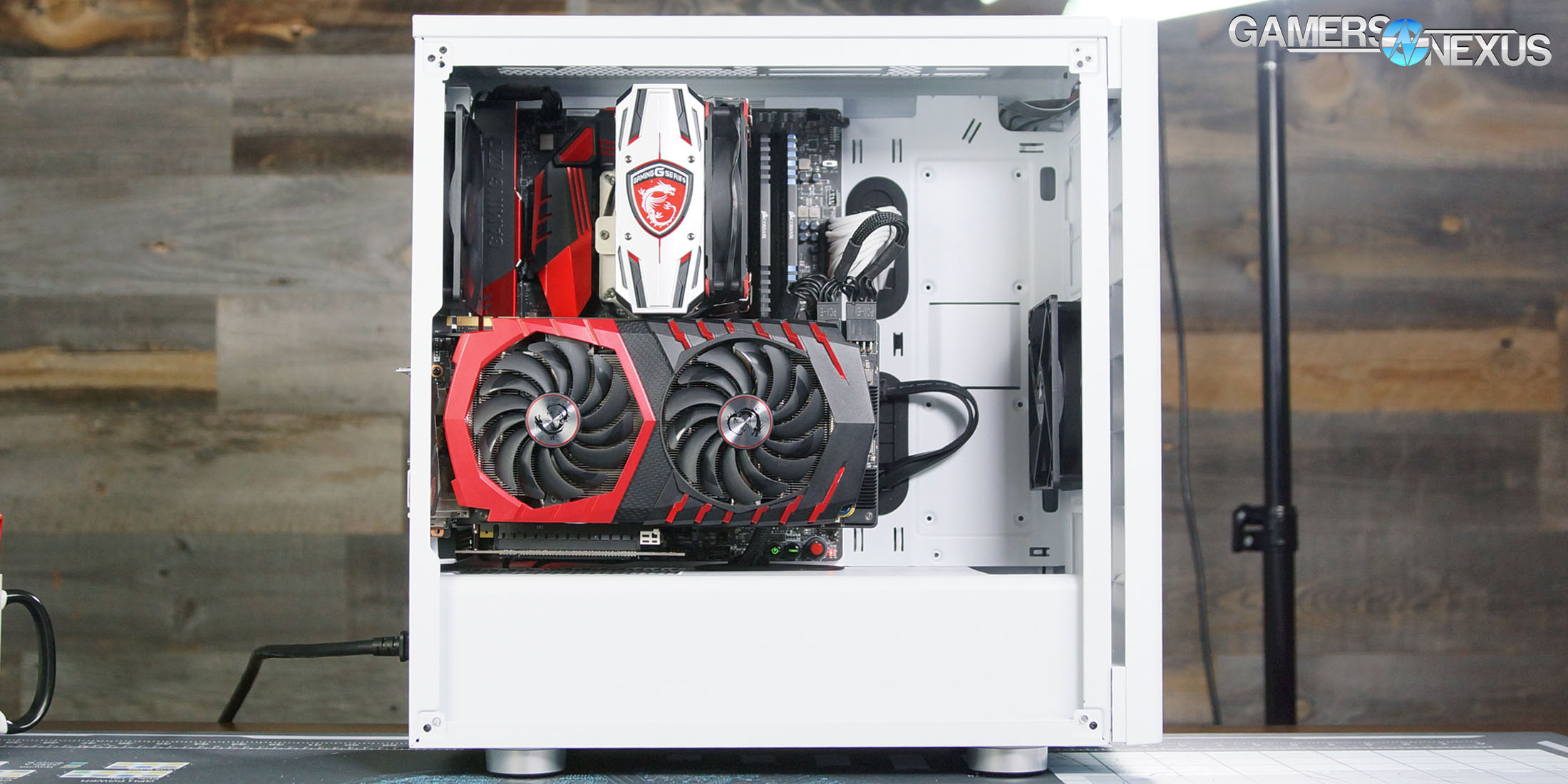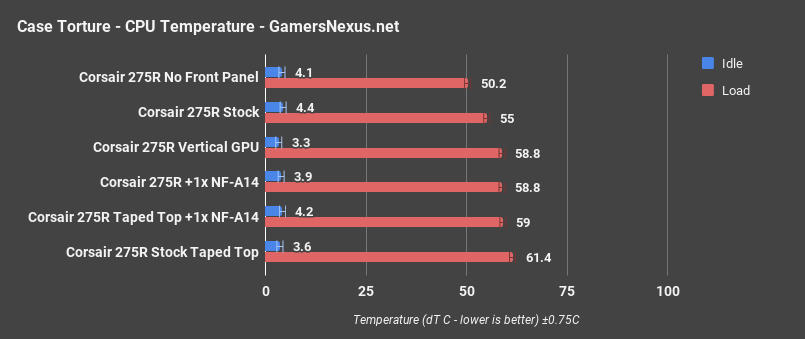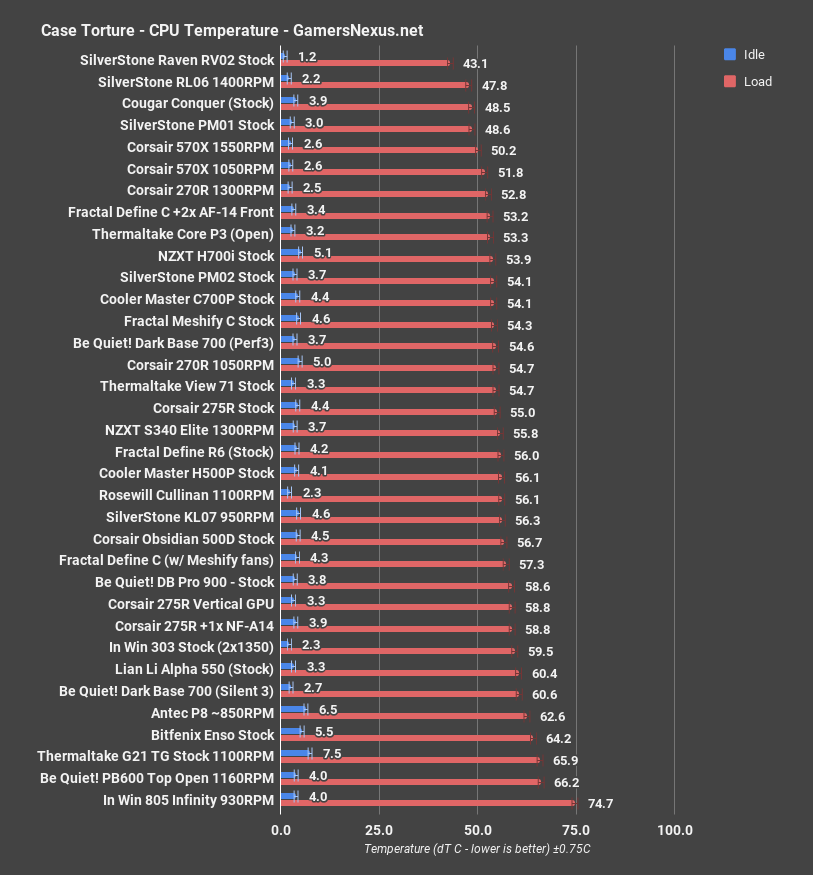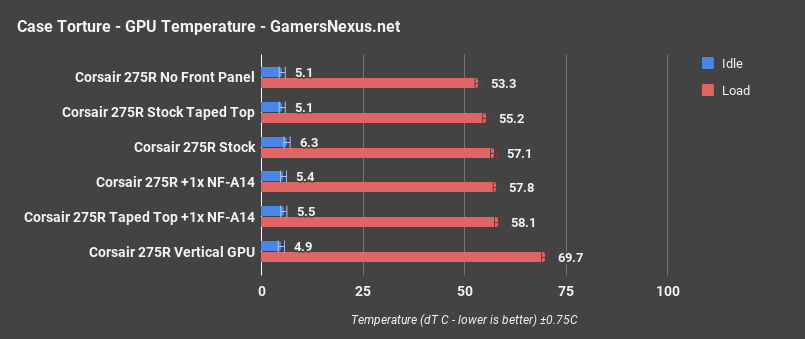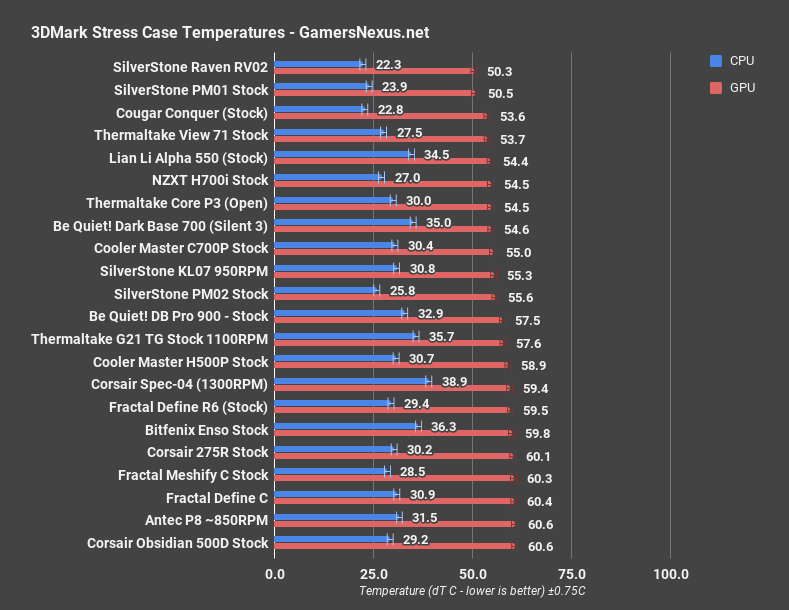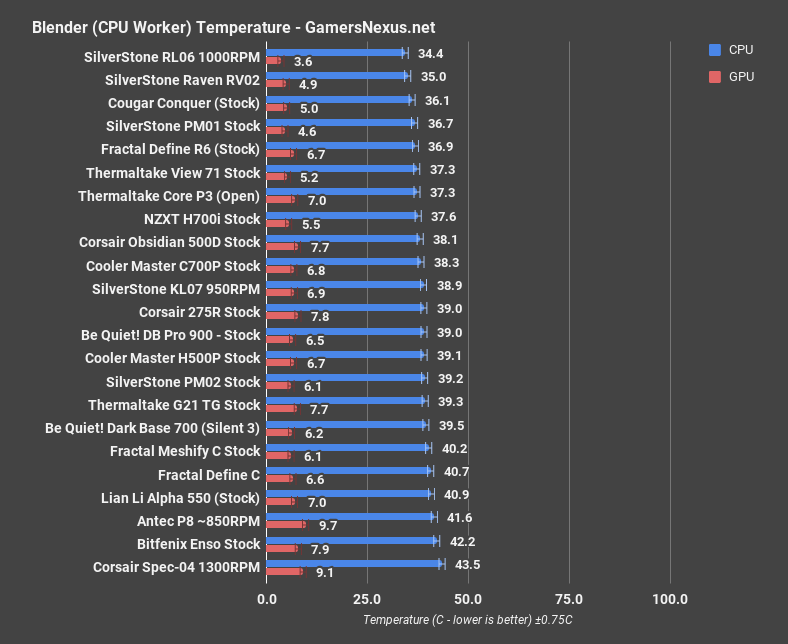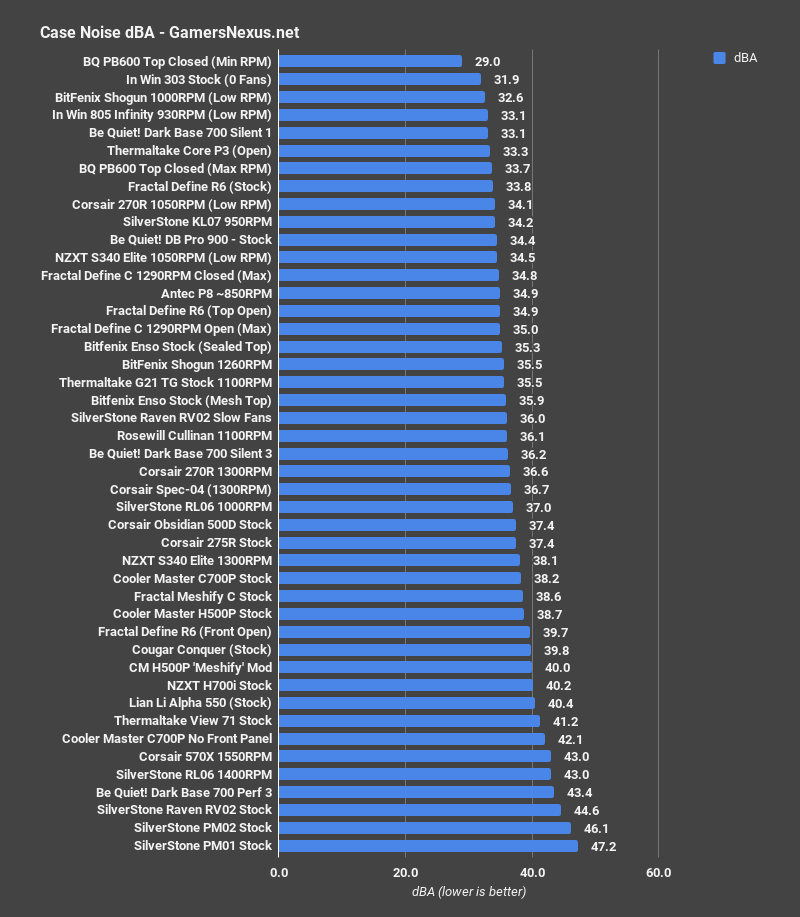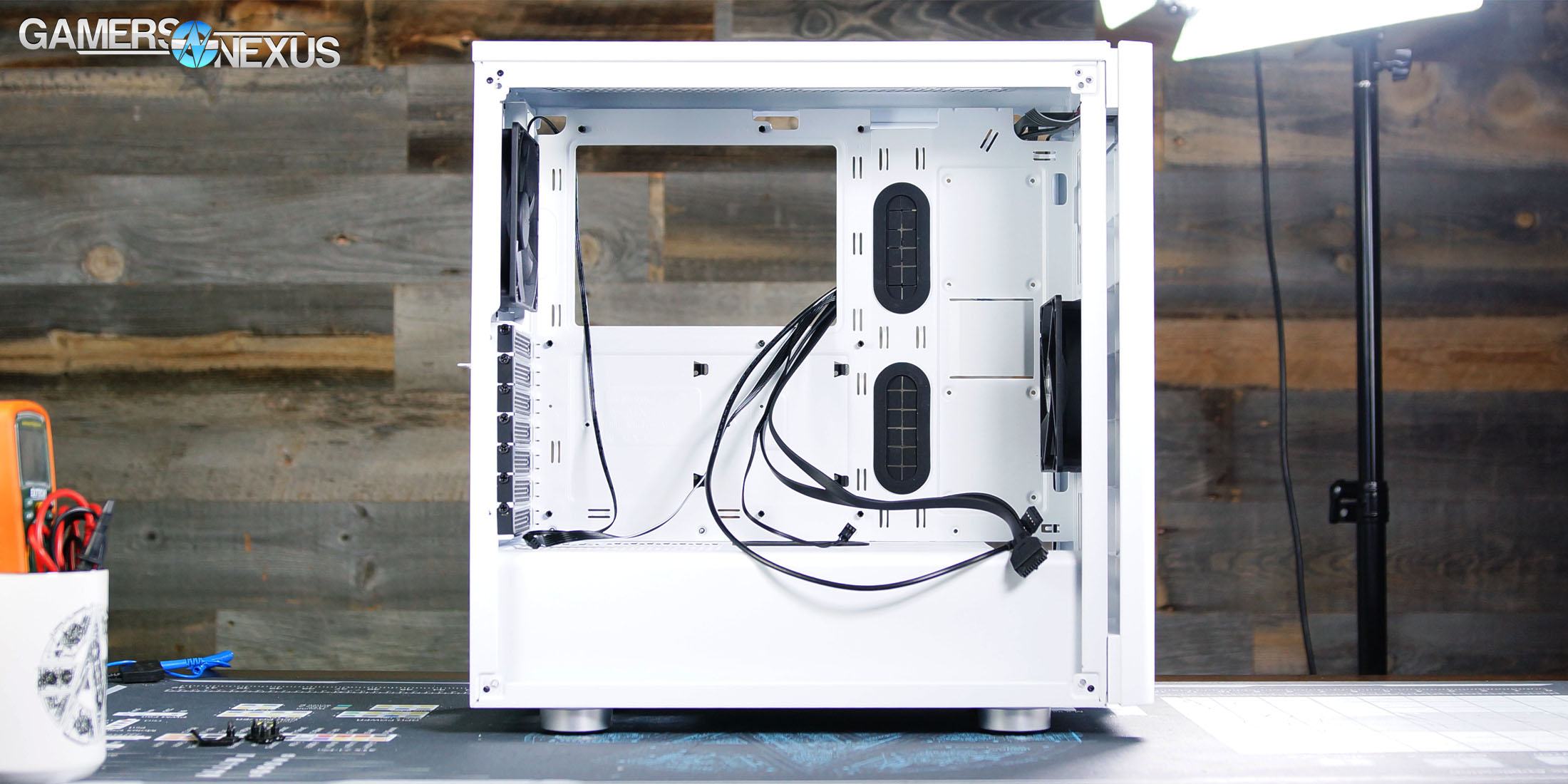The Corsair 270R won our Editor’s Choice award when we reviewed it back in 2016. The 570X was the main event in that article, but we also praised the 270R as a decent case with a launch price in the $60-$70 range--and we’ve continued to mention it favorably, since it’s gone on sale for as low as $50. Now the 275R is here, Corsair’s new and slightly fancier version with the option of a tempered glass side panel.
The Corsair 275R case ships in two varieties: $80 with tempered glass or $70 for acrylic -- at which point the latter is essentially a 270R. The 275R is a refresh, then, and prioritizes tempered glass, a longer PSU shroud that doesn’t abruptly terminate, and rubber grommets. As it differs from the 270R, that would more or less recap the 275R. As its name openly indicates, this is a half-step to something new.
Corsair 275R Specs
Dimensions (H x W x D) | 455mm x 225mm x 460mm |
Drive Bays | 2 x 3.5”, 4 x 2.5” |
Fans | Front: 2 x 140mm or 3 x 120mm(1 x SP120 Black included) Rear: 1 x 120mm (1 x SP120 Black included) Top: 1 x 140mm or 3 x 120mm |
Radiator Support | Front: Up to 280mm/360mm Rear: Up to 120mm Top: Up to 240mm (with low-profile memory) |
Expansion Slots | 7 (+ 2 vertical) |
I/O Ports | 2 x USB 3.0 Power and Reset Headphone and mic |
Clearances | Heatsink: 170mm PSU: 180mm (up to 225mm when HDD cage removed) Graphics: 370mm |
MSRP | $80 ($70 with acrylic window) |
Appearance
We requested the white version of the case, since it’s hard to find a good full-coverage color scheme that isn’t black. Coverage is fine, but the front panel is coated in primer-like brushed white paint that looks good but doesn’t perfectly match the paint used on the metal parts of the case. As shown in the video, we were also able to see some painting imperfections around the borders of the front panel, although we did note that they’re of minimal concern. The curved front panel gives the 275R a distinct look compared to the sharp-edged 270R, but it also causes some problems that we’ll cover in the thermal section.
Like the Silverstone PM02, there’s an LED under the front panel for a subtle underglow. Unlike the PM02, the LEDs draw power from the front I/O without any discrete SATA or Molex cable, which is great--cable management is hard enough without dedicating a whole SATA cable to powering three LEDs. We like that Corsair has tapped-in to front IO for its minor LED power draw. This is something we’d like to see other manufacturers clue-in to. Also unlike the PM02, there’s no plastic silhouette used to project the company logo, so the LED assembly can be taken out to leave the bottom vent completely unobstructed.
Build Quality
We always make a point of mentioning how tempered glass panels are attached, because it’s one area where case manufacturers are still making little improvements. The bog-standard method (and one that Corsair has used before) is to stick some motherboard-style standoffs onto the side of the chassis, wrap them with rubber, and bolt the glass panel over them with thumbscrews at each corner. Corsair broke with tradition and common sense by skipping the standoffs this time and replacing the thumbscrews with Allen bolts. No standoffs means it’s annoyingly difficult to line things up and hold the panel steady (especially with the case vertical), and the hex sockets require an included Allen key to fasten or remove. It doesn’t make any sense: Corsair still has to drill the same holes through the glass panel, so they’re not making the manufacturing process any easier, and if they wanted to save money on screws they could at least have used Philips-heads. The rubber grommets fall out as each screw is removed (or added), turning a process which should be trivial into a disproportionately painful one.
On the interior, the 275R is functionally identical to the 270R, which is a good thing. That’s functionally identical, not literally--we tried switching the 275R’s tempered glass onto the 270R, but the chassis is slightly too big. The cable cutouts now have rubber grommets and well-placed cable tie points placed around them, and the PSU shroud now extends the full length of the case, but otherwise it’s a familiar sight. The cutout in the shroud for GPU power cables is a feature we’d like to see more often. The interior also features Direct Airflow Path™ cooling, which is apparently a trademark-able phrase that translates to “there are no drive cages above the shroud.” There is still a sheet of plastic in front of the fan, granted. Instead, there are the usual two 3.5” drive sleds in a cage under the shroud and four total 2.5” mounts behind the motherboard tray. Thankfully, the 3.5” cage is attached with screws and can be removed, unlike some other budget cases that use rivets.
Press photos of the 275R had us worried. It doesn’t look like there’s any ventilation in the front panel at all other than the bottom. The 270R also has a closed front panel, but with adequate mesh gaps on either side-we like it for the price anyway, not its performance. Luckily, ventilation is a little better than it appears--there’s an open gap nearly a centimeter wide to either side of the front panel. The vent on the top of the case is just as large as it was in the 270R, so there’s also some potential for passive cooling through that, and Corsair included a magnetic filter which makes a top intake configuration a little more realistic.
Case Testing Methodology
We tested using our new Skylake case test bench, detailed in the table below. This particular configuration is brand new with the launch of the 570X & 270R. Results on this test platform cannot be compared to previous case benchmark results, as the platform has completely changed.
Conducting thermal tests requires careful measurement of temperatures in the surrounding environment. We control for ambient by constantly measuring temperatures with thermocouples and laser readers. We then produce charts using a Delta T(emperature) over Ambient value. This value subtracts the thermo-logged ambient value from the measured diode temperatures, producing a delta report of thermals. AIDA64 is used for logging thermals of silicon components, including the GPU diode.
All case fans are manually configured to their maximum throughput using BIOS, then we configure to an RPM closer to 1050 for a universal "quiet" testing. If a fan controller is present, we opt-in and test on multiple settings. This forces testing of case fan performance in addition to the case's air channeling and airstream design. This also ensures minimal variance when testing, as automatically controlled fan speeds can reduce reliability of benchmarking. The CPU fan is set to 1100RPM (constant) for consistency, and the CPU is overclocked to 4.4GHz with a vCore of 1.272V (constant). C-States and power saving states are disabled.
| Component | Courtesy Of | Price | |
| Video Card | MSI GTX 1080 Gaming X (OC Mode) | MSI | $640 |
| CPU | Intel i7-6700K @ 4.4GHz | GamersNexus | $300 |
| CPU Cooler | MSI Core Frozr L | MSI | TBD |
| Motherboard | MSI Z170A Gaming M7 | MSI | $180 |
| Memory | Corsair Vengeance LED 32GB 3200MHz | Corsair | $200 |
| SSD | Samsung 850 EVO 120GB | Samsung | N/A |
| PSU | Corsair RM650x | Corsair | $100 |
| Case | This is what we're testing! | - | - |
The video card is configured to run at 55% fan speed at all times.
Prior to load testing, we collect idle temperature results for ten minutes to determine the unloaded cooling performance of a case's fans and air channels. Thermal benchmarking is conducted for 1400 seconds (23 minutes), a period we've determined sufficient for achieving equilibrium. The over-time data is aggregated and will occasionally be compiled into charts, if interesting or relevant. The equilibrium performance is averaged to create the below charts.
Load testing is conducted using Prime95 LFFTs and Kombustor “FurMark” stress testing simultaneously. Testing is completely automated using in-house scripting, and executes with perfect accuracy on every run.
We recently validated our test methodology using a thermal chamber, finding our approach to be nearly perfectly accurate. Learn more here.
Thermals & Noise
We went overboard with the additional tests again this time, but it couldn’t be helped. Our initial plan was just to test stock configuration, an additional 140mm intake fan, and a vertical GPU orientation, which would make six test runs along with our 3DMark and Blender tests. When we installed the 140mm fan, though, the resulting temperatures were higher than they had been before. Fitting the extra fan into place required moving the stock intake fan down slightly, but logically there should have been more airflow across every component. Retesting showed the same results.
Our theory is that in the stock configuration (one intake, one exhaust), our CPU cooler independently pulls in cool air from the large vent on top of the case. Adding the 140mm Noctua fan in front of the CPU cooler creates positive pressure inside the case, which means the cooler now only receives air from the intake fans. Because of the extremely closed-off front panel, the intake fans probably recirculate some warm air from inside the case, raising the CPU temperature. To verify this, we did more tests with the top vent taped shut. By the time we were done with everything, we’d done more than twelve test runs.
CPU Torture
Starting with the 275R only, our CPU torture test averaged 55 degrees Celsius over ambient for the CPU temperature with the stock configuration. Taking the front panel off lowered this to 50.2C dT, as expected—and that’s not the worst delta for a panel-less test that we’ve seen, either. Corsair’s panel isn’t as much of a limiter as its stock fan configuration is, but certainly isn’t helping. As mentioned above, adding an extra fan actually raised this temperature to 58.8 degrees dT in one test and 58.9C in a re-test. We knew taping the top of the case shut would make temperatures warmer overall, but if our theory was true, it would flip the order of results and the test with an additional fan would be cooler. Taping the top shut in stock configuration raised CPU temperature from 55 to 61.4 degrees, but with the extra fan in place, taping the top shut had barely any effect, and temperature only grew by 0.1C – within error. A vertical GPU orientation also resulted in a 58.8C dT, with warm air dumped out of the GPU cooler into the CPU above.
Comparatively, 55 degrees Celsius is approximately what CPU temperature was in the 270R with the case fans running at 1050RPM, but running them at full 1300RPM lowered that to 52.8 degrees. The 275R and 270R are not significantly different in thermal performance from one another with this test, and the fans run the same RPM spec. The View 71 and S340 Elite are also around this temperature range, but the similarly priced Meshify C and cheaper plastic-sided RL06 are both cooler.
GPU Torture
GPU dT was 57.1C in the torture test, with a best-case dT of 53.3 degrees with the front panel removed. As with the CPU, adding an additional fan raised the temperature to 57.8C and 58.4C in two tests--although the increase is smaller and therefore less conclusive, existing within error margins. With the top taped shut and in stock configuration, GPU temperature actually dropped to 55 degrees, exiting margin of error, and establishes that the pressure patterns in this case, with our specific cooler and video card, created the behaviors here. Temperature also increased back to 58.1C – within margin of error of stock baseline – with the additional fan added back in. GPU temperatures are already difficult to compare thanks to frequency boosting, but there are also some very specific airflow and pressure patterns at work here, and they’re affecting results in ways that are frustratingly subtle. All we can say for sure is that this is how our system behaved, with our specific CPU cooler and our GPU, running at our chosen fan speeds with our chosen workloads. Mounting the GPU vertically resulted in a comically high temperature of 69.7 over ambient, which was almost a welcome return to sanity--no matter what, vertical GPU mounts suck for open-face cards. Accounting for ambient, that puts us into the 90s. GPU throttling hits hard at 84C.
Comparatively, the baseline 57.1-degree measurement is much warmer than the 270R’s 51.6C, and more comparable to the Pure Base 600’s best result or the In Win 805i. It’s on the warm end of the chart, but doesn’t cause the runaway thermals we see with (for example) vertically mounted GPUs. Corsair’s previous case is performing better for our configuration with GPU cooling, which we believe to be a factor of front panel changes and the significant PSU shroud changes, with the latter likely impacting GPU performance more heavily.
3DMark
The 275R landed at the high end of our 3DMark results, with a GPU temperature of 60.1C. That’s in between the Bitfenix Enso and Fractal’s two C cases, which ship with a similar fan layout. Cases with full shrouds that rely on a single intake fan to push air above and below the GPU tend to do poorly with GPU cooling in our tests, but a case like the Meshify C can scale up performance with additional fans.
Blender
Rendering on the CPU, CPU temperature during the test was 39 degrees Celsius. That’s average, equal to the Dark Base Pro 900 and between the KL07 and H500P, none of which are cases we praised for cooling. The Meshify and Define C cases were slightly warmer than the 275R here.
Rendering on the GPU, GPU temperature during the test was 29.6C. That’s close to the Define R6, a case with one more fan, but it’s also pretty close to the H500P and stock Meshify C again, but cooler than the stock Define C for once.
Noise
37.4 dBA is on the same level as the Spec-04 and 270R, both fellow Corsair cases with 120mm front-mounted fans. The front panel may be sealed, but it’s still made of thin plastic with open gaps on either side. More fans added to the front of this case means more air trying to rush through those narrow gaps, which also means more noise.
Conclusion
Like the PM02 we just reviewed, the 275R is a case that needs to justify its own existence thanks to the reputation of its predecessor. At the conclusion of our 270R review, our recommendation was based on “its $60-$70 price-point and assertive posture against nearby competition.” The tempered glass 275R reviewed here is $80. The less expensive acrylic-sided version (with no top dust filter or rubber grommets) is only $70, but so are multiple glass-sided cases by now, and acrylic-sided cases can be found for around $50--including the 270R. The 275R doesn’t perform terribly and it preserves many of the positive aspects of the 270R, but other than the tempered glass, there’s nothing that surpasses it.
